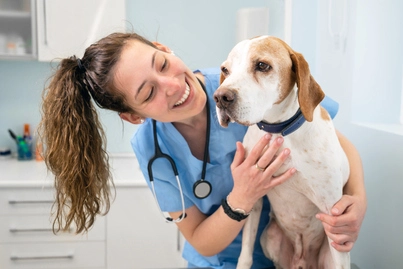One vital question all pet owners must ask themselves before treating their dogs for gas: are you sure your dog is responsible for those smells in the room?
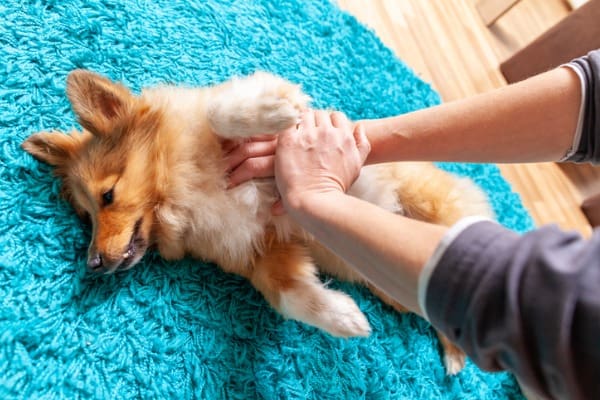
Let’s put pride aside for a moment and face facts – everyone has blamed it on the dog at least once.
But if you’re sure your beloved pup is feeling extra gassy, you naturally want to help relieve their symptoms and clear the atmosphere in your home.
That’s why you ask, “what can I give my dog for gas pain?”
Time to investigate:
Dog gas has many causes, and there are many things you can do to help your flatulent friend.
A gassy dog is probably not in any immediate danger in terms of their health, but gas can make them uncomfortable – and make us want to run for the gas masks.
Whether you want to be able to share a bed with your dog again or just want to enjoy their company without any smelly interruptions, there are several treatment options.
Good news, too.
Most of these cases can be treated at home without a trip to the vet.
Why Is My Dog Gassy?
Like us, dogs can experience a bout of gassiness after eating certain foods. They can also be gassy by nature or due to age.
If your dog has gas occasionally, it’s helpful to try and narrow down the common denominators and pinpoint the primary source – or sources.
We’ll cover some of the common culprits that can lead to your dog passing gas.
It’s Something They Ate
Their usual diet or something they picked out of the garbage could have equally windy results.
It’s no secret that even the best-behaved dogs will scavenge from the trash can from time to time.
For them, it’s a tasty, coveted treat – but in reality, it could be old, half-rotting food that’s sure to cause some digestive discord.
But the source might be what you’re pouring into their food bowl.
Any dog food that has a high soy content or too many starchy fillers is likely to cause some gas.
Think bargain bin, low-quality dog food.
These tend to have a high carbohydrate content, and carbs are significantly more difficult for dogs to digest than they are for us.
There’s more:
Foods high in fat will also trigger gas. So think hard before you share chicken skin and bacon with your dog.
Save these treats for very special occasions, as too much fat can cause other health problems far worse than gas.
Dogs on raw diets, especially those which contain cruciferous vegetables, can experience gas.
And any sudden change in their diet can have gas as a side effect while your dog’s digestive system adjusts to the new food.
It’s also worth noting that dogs are generally lactose-intolerant.
While feeding dairy products is rarely a danger to their health, it can wreak havoc on their gastrointestinal systems – with flatulence as a common side effect.
Any dog can have an allergy to a food group, and if they’re eating something they’re allergic to, it can cause some digestive issues.
It’s Not What They Eat – but How They Eat
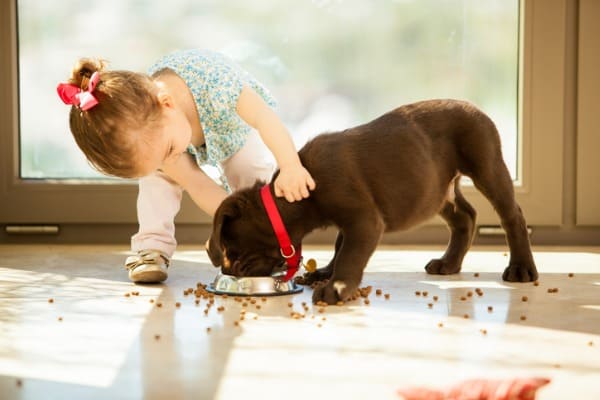
Dogs that scarf down dinner in record time are likely to swallow a lot of air as they eat.
The more air they swallow, the gassier they can be.
Some slow-eating dogs can’t help swallowing air as they eat.
“Flat” faced dogs (think Pugs, Bulldogs) have more trouble breathing as they eat, and as a result, end up swallowing air.
They’re a German Shepherd
We’re speaking as experienced Shepherd parents here – the breed is known to be extra gassy.
But they’re not the only breed that can subject you to excess gas.
As we mentioned already, Pugs, bully breeds, hounds, and Mastiffs can all break wind in high volumes.
Why does their breed matter?
There’s not a clear answer for this yet – it could be due to their physiology or their ability to digest a certain food.
But one thing is for sure; if you have any of these breeds or a mix of them, you know all too well how much gas is a fact of life.
They’re Nervous
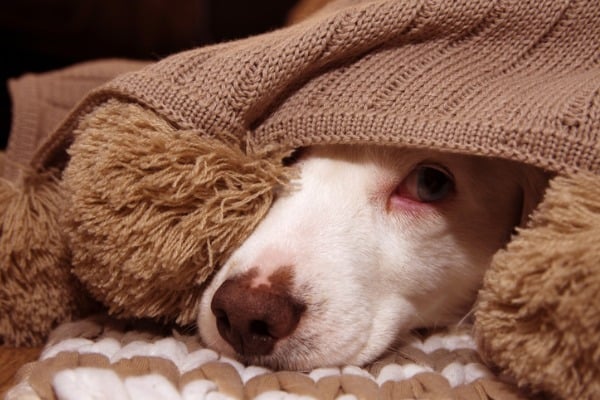
If you find that car rides are a particularly stinky affair, it could be due to your dog being excited.
Nervousness can stimulate their digestive system, with gas or even car sickness the result.
What Can I Give My Dog for Gas Pain and Bloating?
You can do several things to dial down the gas.
Slapping a band-aid on the issue and lighting some scented candles is a short-term solution, but it isn’t doing much to help your dog feel more comfortable.
The best strategy is to find the source and treat it from there.
But in the meantime, you can do a few things to provide relief for your dog (and your nose).
Simethicone
As a general rule, always consult your vet about the dosage and safety of administering your dog any medications that are for people.
Connect with a verified veterinarian in minutes. No waiting for appointments or office hours. No high fees. Your pet's health made convenient and worry-free.
But yes, some things in your medicine cabinet are generally safe to give your dog for immediate gas relief.
Simethicone is a common anti-gas drug found under many labels.
When you need to provide fast relief, it’s a good backup to have around.
Make sure it’s not combined with any other ingredients, as they might not be safe for your dog. But simethicone can work on a dog in the same way it works for us.
There are a few stipulations to this option.
If your dog has chronic gas, you’ll need to address the root cause instead of constantly feeding them anti-gas pills.
These types of drugs can also disrupt the pH balance of their digestive system, which can lead to a whole new set of issues.
So while occasional gassiness can be treated with simethicone, don’t rely on it all the time.
Change up Their Food
Frequent gas can be an indicator that something in their diet doesn’t agree with them.
Just Say No to Junk
If they get a lot of table scraps, the easy answer is to limit table treats and people food or eliminate them entirely.
Remember, many human foods carry risks of causing obesity, pancreatic and liver disorders, and general digestive distress.
So not only will taking these foods off the table – or out of the bowl – help with gas, it’ll help your dog’s overall health.
Change up Their Feeding Routine
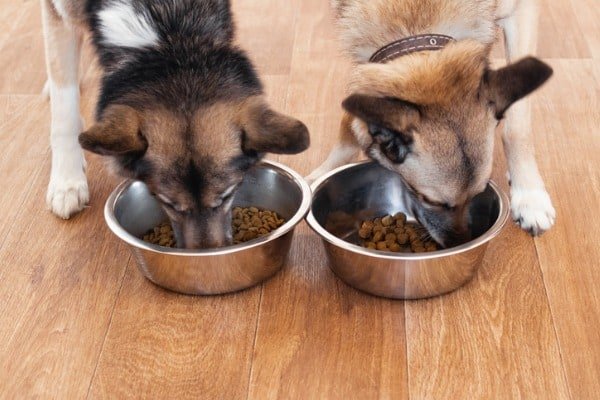
Do you have an eater that likes to break the sound barrier when you put their bowl in front of them?
That lightning-speed eating habit can cause your dog to swallow a lot of air – and lead to a gassy post-meal show.
Some dogs eat fast because they’re anxious about other pets invading their safe space at mealtimes.
If you have multiple pets, separating them at feeding times can help them relax; they won’t feel as pressured to finish their meal before someone else comes in to steal it from them.
But some dogs practically inhale their food for no apparent reason. In these cases, special bowls can be purchased, which are designed to force your dog to slow down while they eat.
An easy, DIY fix is to put a ball in their dish – the obstacle will make it harder for them to scoff down their meal in three bites.
One important thing to remember.
The ball must be big enough not to pose a choking hazard.
Golf and ping-pong balls are too small for all but the tiniest of toy breeds. Tennis and baseballs are better alternatives.
But what if my dog outsmarts the ball strategy?
It’s true – some dogs will simply use their paw or mouth to remove the ball.
There are a few more things you can do to slow down their eating if they try to pull a fast one on you.
Feeding on a flat tray or plate instead of a deeper dish is one way they will have to slow down to eat.
And if you have a determined speed-eater? You can present meals in a feeder ball or similar rubber toy, which requires them to work for their food.
They will have to nose around the toy to get food to come out, and they have no choice but to wait for a few kibbles to come out at a time.
Not only will this slow down their eating, but it will also provide some great mental stimulation for your dog.
Just make sure your dog is able to figure out the “game,” and check the contents of the toy to verify they have gotten their entire meal.
It’s Time for a New Diet
No, we’re not suggesting you put your dog on the keto diet or turn them vegan.
But some typical diets won’t work if you have an atypical dog.
Food allergies and sensitivities are the first things to assess, as some dogs will experience gas because they’re sensitive to specific diets.
With the guidance of your vet, you can narrow down and use the process of elimination to pinpoint the ingredients your dog has issues digesting.
A common food allergy in dogs might surprise you.
It’s animal proteins.
Beef and chicken are the top two animal proteins that might be to blame for your dog’s upset tummy.
Wheat and soy are close behind, and with many dog foods containing high grain content, it’s hard to find something your dog can safely eat.
But luckily, a lot of research has been put into dog allergies in recent years.
As a result, many pet food brands have great options for dogs with allergies.
You might even choose to try a natural diet – that is, something you prepare for your dog with things you can shop for at the grocery store.
Note that natural or raw diets can be expensive and time-consuming and require a lot of research.
As always, a vet can tell you which foods and supplements you should include in your dog’s meals if you go this route.
Remember that any change in diet calls for a slow transition. Dogs can’t handle sudden, drastic changes in their food.
Not only can a sudden shift make gas worse, but it can also cause diarrhea that requires vet care and medication.
An abrupt change can upend the natural bacterial colonies in your dog’s stomach, and repopulating it with prescription meds is necessary to regulate their bowels.
Unless the current food is causing a severe allergic reaction, mixing it with the new food is the best option.
Slowly add small amounts of the new food while subtracting the same amount of the old food – some dogs do best if it’s as little as a handful at the start.
See how your dog reacts at each increase in the new food, and as long as their elimination habits don’t show any drastic changes, you can bump up the amount of the new food.
This process can be spread out over as long as a month until your dog has completely transitioned to the new food.
Exercise, Exercise, Exercise
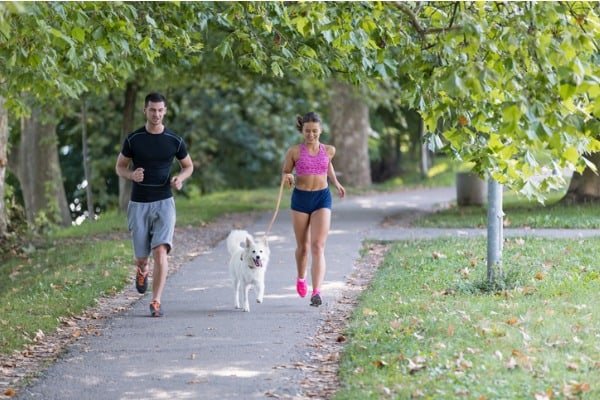
Just to emphasize: exercise.
Physical activity is integral to digestive health in all animals, and not enough of it can lead to excess gas in dogs.
Unless your dog is laying around and not eating at all, get them outside moving regularly.
So if your dog has been slacking in the exercise department, adding some more walks and playtime could help you see a decrease in their gassiness.
Exercise can also help with stress in dogs, just like it can us humans. In general, this is one way to help reduce gas pain brought on by stressful times in your dog’s life.
You Can Take a Hands-on Approach
A gassy and bloated dog can be uncomfortable, and no one wants to see their baby suffering.
So is there anything you can do when the gas starts to really bother them?
Yes, there is.
How to Massage Gas Out of a Dog
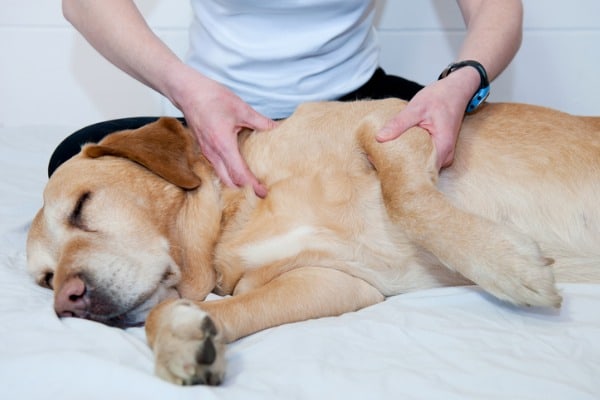
If you’ve ever cared for a human baby, you know helping them pass uncomfortable gas by massaging them can be very effective.
Luckily, you can do something similar for your dog.
Don’t worry if you don’t have any experience with a baby; it’s pretty simple to massage gas out of your dog.
The Golden Rule: be gentle.
You need only a light touch to help your dog pass wind.
Dogs will let you know if you’re causing them discomfort or pain, but you should handle them very gently anyway.
Laying them on their backs to massage their belly is best, but if you have a dog that doesn’t enjoy lying in this position, you can do it while they lie on their side.
Start with a good petting or scratch – make them feel comfortable and safe.
Petting their favorite spot is a great way to get them to relax, which is already a step towards moving painful gas toward the exit.
Slowly transition to their belly. Use your flattened palm to massage in small circles.
You might hear some tummy noises as the gas begins to move.
As long as you’re not hearing any crying or yelping from your dog, you can continue until they’re able to pass the gas.
Sometimes, using the same gentle motions on their back can help, but focus mainly on their tummy.
Your initial reward will likely be a stinky one, but your dog will thank you for relieving that painful gas bubble.
You might only need to do this for a few minutes, but a large gas buildup can take some patience while you work to relieve your friend.
An important note: if your dog shows signs of distress or pain and is reluctant to let you touch their belly, it could be an indicator of something more serious. We’ll touch on that soon.
Desensitize Them
Dogs that become gassy when they’re nervous can be a little more difficult to treat.
The best tool is to help them acclimate to the situations that make them nervous.
One example is car rides that include a breeze that doesn’t come from the windows!
Some pet parents might become reluctant to take their gassy dogs on car rides or trips to the park.
Sure, you’re saving your nose. But in the long run, you’re depriving both of you of fun trips and bonding opportunities.
What to do?
Instead of leaving your dog at home, help them become used to car rides.
If every car ride ends in the vet’s parking lot, they’ll associate the car with something that makes them anxious.
Start taking car trips to fun places like the dog park, the trailhead of your favorite hike, or the pet store.
Dogs love looking out the window. You just have to crack it enough that they can poke their nose out and take in some interesting smells. It’s a great reward for them.
Two important safety rules for dogs in cars: don’t let them put their entire head out at high speeds or in heavy traffic, and always keep them secure.
Seatbelts for pets are an excellent way to keep them safe and secure in the car.
When they learn that car trips mean exciting scenery, hikes, and playtime, they will slowly lose their trepidation for car rides.
And you’ll find it much more pleasant when you don’t have to stick your own head out the window for fresh air.
Some dogs just get carsick, plain and simple.
While vomiting is the biggest issue you’ll encounter when dealing with a carsick dog, their gas could be due to an upset tummy.
Remember to drive gently, don’t feed your dog anything immediately before embarking on your ride, and make frequent stops.
When to See the Vet
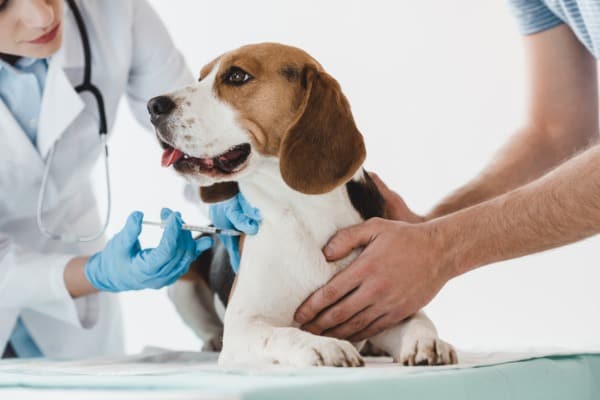
If your dog’s gas is frequent and recurring or is causing them a lot of pain, you’ll need to get them assessed by a vet to rule out anything serious.
What Should I Look Out For?
The most serious condition that can be mistaken for gas and bloating is a life-threatening condition known as bloat.
Your dog’s swollen and distended abdomen could be a sign that gas has built up in your dog’s stomach so severely that it has twisted – cutting off blood supply to vital organs.
This has to be treated as soon as possible, so look out for attempts to vomit or strain to pass gas with no results.
They will also be restless, and touching their bloated stomach will cause them distress and pain.
When is it urgent?
If your dog looks gassy but isn’t passing anything, call your vet immediately.
There is good news: this is a rare condition, and it is treatable, provided you get your dog emergency care.
Now, onto the less-scary symptoms.
Dogs who are always gassy could have a gastrointestinal disease, parasites, or irritable bowel disorder (IBD).
Aside from a constant stream of gas, they’ll probably have issues with diarrhea, vomiting, frequent need to eliminate, weight loss, or lack of appetite.
When the gas doesn’t go away and is accompanied by any of the symptoms above, your dog could need of medication or treatment for a GI disorder or parasites.
If that’s the case, whatever course of treatment your vet recommends will help clear up your dog’s gas, as well as the underlying issue that’s causing it.
Dog Gas Happens
When your dog has gas, odds are it’s from something minor and easily treated. The most common cause is something they’ve eaten.
Whether it’s table scraps or an ingredient in their regular food, you have the power to help control their gas and clear the air in your home in the process.
Always remember to monitor other symptoms in your dog, and be sure any sudden or unusual changes are reported to your vet.
But fortunately…
There is plenty you can do to help relieve your dog and other members of the household from smelly gas.
As we’ve covered, you now know quite a bit about what to give a dog for gas pain.
Dog gas relief can come from a better diet, more exercise, or even a massage to help them pass some difficult wind.
At the end of the day, everyone has gas from time to time – your dog included.
The smell might be enough to make you run for cover, and the sounds that serenade you can be quite hilarious – especially when your dog turns and looks in surprise at their own rear end.
But sometimes gas is just gas and a small price to pay for sharing your home with such a lovable creature.

